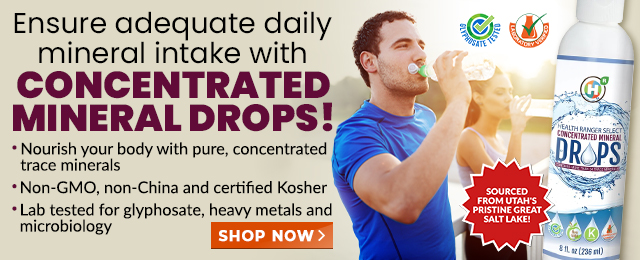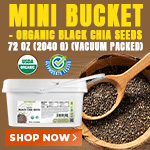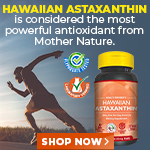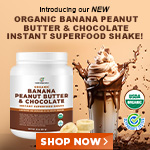Icing muscle injuries could actually delay the normal healing process, study finds
Monday, March 07, 2016 by: Amy Goodrich
Tags: muscle injuries, ice, inflammation
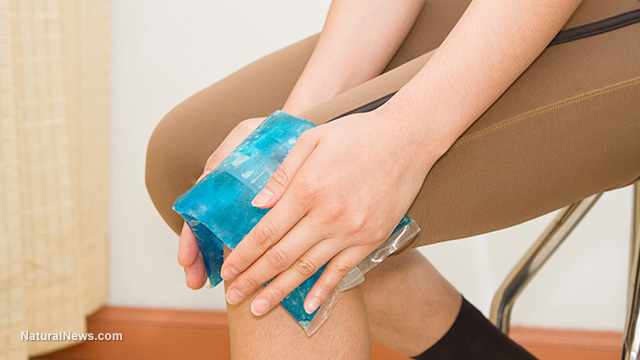
(NaturalNews) For decades, doctors, coaches and trainers around the world have advised us to put ice on sore, bruised, sprained or torn muscles to reduce pain and swelling. Ever since Dr. Gabe Mirkin came up with the acronym RICE – during the late seventies - Rest, Ice, Compression and Elevation (RICE) has been the way to go to treat every athletic or muscle injury.
But is RICE truly the best thing to do to speed up healing and recovery, or does it need a revision? More recent research shows that icing and total rest may actually be doing just the opposite.
The numbers and studies do not lie, and even Dr. Mirkin had to come back to his own recommendation.
"Coaches have used my 'RICE' guideline for decades, but now it appears that both ice and complete rest may delay healing, instead of helping," he wrote on his website.
In an article published by Mcleans.ca, Mirkin adds, "RICE is just something that stuck—and it's wrong. I'm partially responsible for this misinformation."
Inflammation, not always a bad thing
A recent study, published in the Federation of American Societies for Experimental Biology journal, suggests that inflammation just after an injury is an essential part of tissue regeneration and healing. Therefore, topical cooling or icing shouldn't be used to stop or delay this important reaction.Inflammation is a complex biological immune reaction where special cells and proteins are sent to the place of injury to promote healing. They release hormones into the damaged tissues that help them to heal. Same thing happens when our body is attacked by bacteria or viruses. Inflammation occurs and special cells or macrophages are sent to kill the invaders.
Now, despite decades-long advice, researchers found that applying ice actually delays the inflammatory reaction, angiogenesis and the formation of new muscle fibers. It causes blood vessels to constrict and shuts off the blood flow. Although this helps in numbing the pain, it also makes it impossible for inflammatory cells and proteins to reach the area of the injury and start the physical response to repair tissue and promote healing.
So the swelling and inflammation seems to be a good thing, and our body will naturally remove any swelling when the healing is done.
"These findings challenge the practice of using ice to treat muscle injuries," the research team wrote.
These finding throw a whole new light on our current treatments and the prescription of anti-inflammatory drugs.
Gerald Weissmann, editor of the Federation of American Societies for Experimental Biology journal, said: "For wounds to heal we need controlled inflammation, not too much, and not too little. It's been known for a long time that excess anti-inflammatory medication, such as cortisone, slows wound healing. This study goes a long way to telling us why – insulin-like growth factor and other materials released by inflammatory cells [help wounds] to heal."
MCE, the new RICE
Next to the no-ice rule, the no-movement rule seems to be ready for revision, too. A study published in The American Journal of Sports Medicine found that exercise, not total rest, may help heal ankle sprains much faster.Through these findings, a new acronym was born to replace the old RICE, MCE, which excludes cold therapy or icing and total rest. It stands for Move safely when you can as much as you can, Compress and Elevate (MCE).
Sciences proves yet again that common methods considered beneficial can in fact be the worst thing to do. Therefore, it is important to keep questioning what we do every day and further investigate things we take for granted.
Next time you have sore, bruised, sprained or torn muscles, forget about the "RICE is nice" rule and keep it moving if you can.
Sources for this article include:
FaseBJ.org
NewsWise.com
DrMirkin.com
Telegraph.co.uk
GuardianLV.com
Macleans.ca
Muscle injuries at FETCH.news
Get independent news alerts on natural cures, food lab tests, cannabis medicine, science, robotics, drones, privacy and more.
Take Action: Support Natural News by linking to this article from your website
Permalink to this article:
Embed article link: (copy HTML code below):
Reprinting this article:
Non-commercial use OK, cite NaturalNews.com with clickable link.
Follow Natural News on Facebook, Twitter, Google Plus, and Pinterest
- Newly released JFK files reveal Pentagon's role in creating Lyme disease and covid in the same lab
- Here are TEN all-natural ways to protect your garden without using harmful chemicals
- Ginseng's hidden anti-aging power: How compound K is rewriting the rules of skincare
- “Endgame: The Hidden Agenda 21” unveils a world of conspiracy and control
- L.A.'s rebuilding nightmare: Only 4 permits issued after fire destroys 6,000 homes
- Scientists demand FDA withdraw mRNA COVID vaccines amid contamination and gene therapy concerns
- Senate Democrats deny censorship industrial complex existed, defend government's role in silencing dissent
- Dr. Suzanne Humphries makes bombshell appearance on Joe Rogan podcast, exposing vaccine industry deception back to POLIOMYELITIS
- “The shame of Minnesota”: Somali immigrants behind $250 million child nutrition fraud in largest COVID-era scam
- Former Congresswoman exposes CCP's deep infiltration of California through universities, ports, and fentanyl
- PROCESSED TABLE SALT in foods found to fuel depression
- Despite surge in MMR vaccination in Texas, measles outbreaks continue: Is VACCINE SHEDDING fueling the spread?
- “Independent” anti-Russia outlet MEDUZA faces COLLAPSE as US funding dries up
- BPA: The hidden hormone disruptor sabotaging your health - and how to fight back
- Chewing gum's dirty secret: How your daily habit could be flooding your body with microplastics
- Embracing the wild: A deep dive into Jim Cobb’s “Backwoods Survival Guide”
- The hidden battle in your glass: How A1 and A2 milk could shape your health
- Catastrophic 7.7 earthquake devastates Myanmar and Thailand; death toll could reach 100,000
- Newly released JFK files reveal Pentagon's role in creating Lyme disease and covid in the same lab
- Analysis: The coming economic collapse, a mass uprising and Trump's three secret weapons to halt the growing revolt
- Festive flavors: The sweet history, nutritional profile and health benefits of pecan pie
- Elon Musk: Aliens could be here on Earth RIGHT NOW
- Trump reverses course on Gaza plan, says “nobody is expelling Palestinians”
- Big Pharma's $8 Billion bribery scheme exposed: how doctors are pushed to prescribe junk science, not heal
- Boys are back in town: Trump’s patriotic alpha crew takes the wheel while toxic females ride in the backseat
- Reclaim your health: How midlife exercise reverses years of inactivity
- A lack of integrity in Academia: Harvard professor found GUILTY of fraudulent research to promote CRT theory
- Survival 101: Effective EMF blocking techniques
- EPA advisor admits the agency is funneling billions to climate groups ahead of Trump’s return to White House
- Dr. Mike Yeadon releases 15-minute testimony - WATCH - about genocidal intent of COVID “vaccines”
- 5 Simple steps to boost your brainpower: How to strengthen executive function in a distracted world
- Florida takes a stand: DeSantis proposes permanent ban on mRNA vaccine mandates
- Sugarcane extract superior to cholesterol-lowering drugs?
- Mike Adams Sermon 66: God will DESTROY ISRAEL for its wickedness
- Pilots report mysterious lights 'moving at extreme speeds' across Oregon skies
- Space war brewing? Russia threatens to destroy Starlink satellites
- EPA advisor admits the agency is funneling billions to climate groups ahead of Trump’s return to White House
- California's social media censorship law struck down: A victory for free speech or a threat to online safety?
- The Health Ranger releases “Vaccine Zombie” song and music video, using AI-animated zombies for the music video
- Dr. Mike Yeadon releases 15-minute testimony - WATCH - about genocidal intent of COVID “vaccines”
- The pandemic as a tool for INDOCTRINATION: Understanding “The Indoctrinated Brain” by Dr. Michael Nehls
- Newly released JFK files reveal Pentagon's role in creating Lyme disease and covid in the same lab
- Florida takes a stand: DeSantis proposes permanent ban on mRNA vaccine mandates
- Mike Adams releases country western hit single: Goin’ Back in Time is Comin’ Home
- Mike Adams releases music poetry sensation: A Child of God
- “Why we influenced the 2020 elections”: Facebook files reveal the coordinated effort to bury the Hunter Biden laptop story
- Unpacking the Lies That We’ve Been Fed – new song and music video released by Mike Adams, the Health Ranger
- RFK Jr. clears key hurdle: Sen. Susan Collins backs controversial HHS nominee, signaling a new era for health policy
- Mike Adams releases new song and music video: Nothing More Disgusting Than a Globalist
- Michigan sheriff announces criminal investigation into 2020 election crimes, Dominion Voting Systems
- Israeli soldiers accused of even more torture and abuse in the West Bank
- Migrants are taking advantage of recent hurricanes to scam residents and loot their homes
- House Intelligence Committee calls for the ARREST and PROSECUTION of Dr. Anthony Fauci
- Rep. Nancy Mace introduces bill to ban biological males from female facilities on federal property
- Red Cross issues warning to stop blood plasma donations from vaccinated people
- Scientists confirm: GENIUS brain function can be spontaneously unleashed in humans without any apparent cause
- EPA advisor admits the agency is funneling billions to climate groups ahead of Trump’s return to White House
- HYSSOP: What research reveals about the health benefits of this ancient holy herb
- Two containers with completed ballots fall out of truck in Florida
- Fully vaccinated about to see “tsunami” of illness and death, warns virologist
- Global leaders unite to clamp down on “misinformation” with UN-backed Cascais Declaration
- BREAKING: 2025 NDAA authorizes mandatory military draft of WOMEN across America… as Pentagon pursues global NUCLEAR war with both Russia and China at the same time
- Michael Yon warns of a ZIONIST TAKEOVER in Trump’s second administration
- BOMBSHELL: DNA testing kits are a SCAM to develop ethnic-specific bioweapons
- Ozempic and Wegovy weight loss drugs are injectable LIZARD VENOM PEPTIDES that may unleash a devastating wave of organ failure… side effects align with symptoms of SNAKE BITES
- Israeli soldiers accused of even more torture and abuse in the West Bank
- These 13 countries just signed an agreement to engineer a global FAMINE by destroying food supply
- NASA admits that climate change occurs because of changes in Earth’s solar orbit, and NOT because of SUVs and fossil fuels
- RFK Jr. clears key hurdle: Sen. Susan Collins backs controversial HHS nominee, signaling a new era for health policy
- Sermon 30: How Jesus reveals Caesar’s FAKE CURRENCY and FALSE AUTHORITY
- Coriander seeds: Ancient medicine backed by modern science
- Arizona officials claim Maricopa County needs 10-13 days to tabulate results of the election
Science News & Studies
Medicine News and Information
Food News & Studies
Health News & Studies
Herbs News & Information
Pollution News & Studies
Cancer News & Studies
Climate News & Studies
Survival News & Information
Gear News & Information
News covering technology, stocks, hackers, and more



"Big Tech and mainstream media are constantly trying to silence the independent voices that dare to bring you the truth about toxic food ingredients, dangerous medications and the failed, fraudulent science of the profit-driven medical establishment.
Email is one of the best ways to make sure you stay informed, without the censorship of the tech giants (Google, Apple, Facebook, Twitter, YouTube, etc.). Stay informed and you'll even likely learn information that may help save your own life."
–The Health Ranger, Mike Adams











